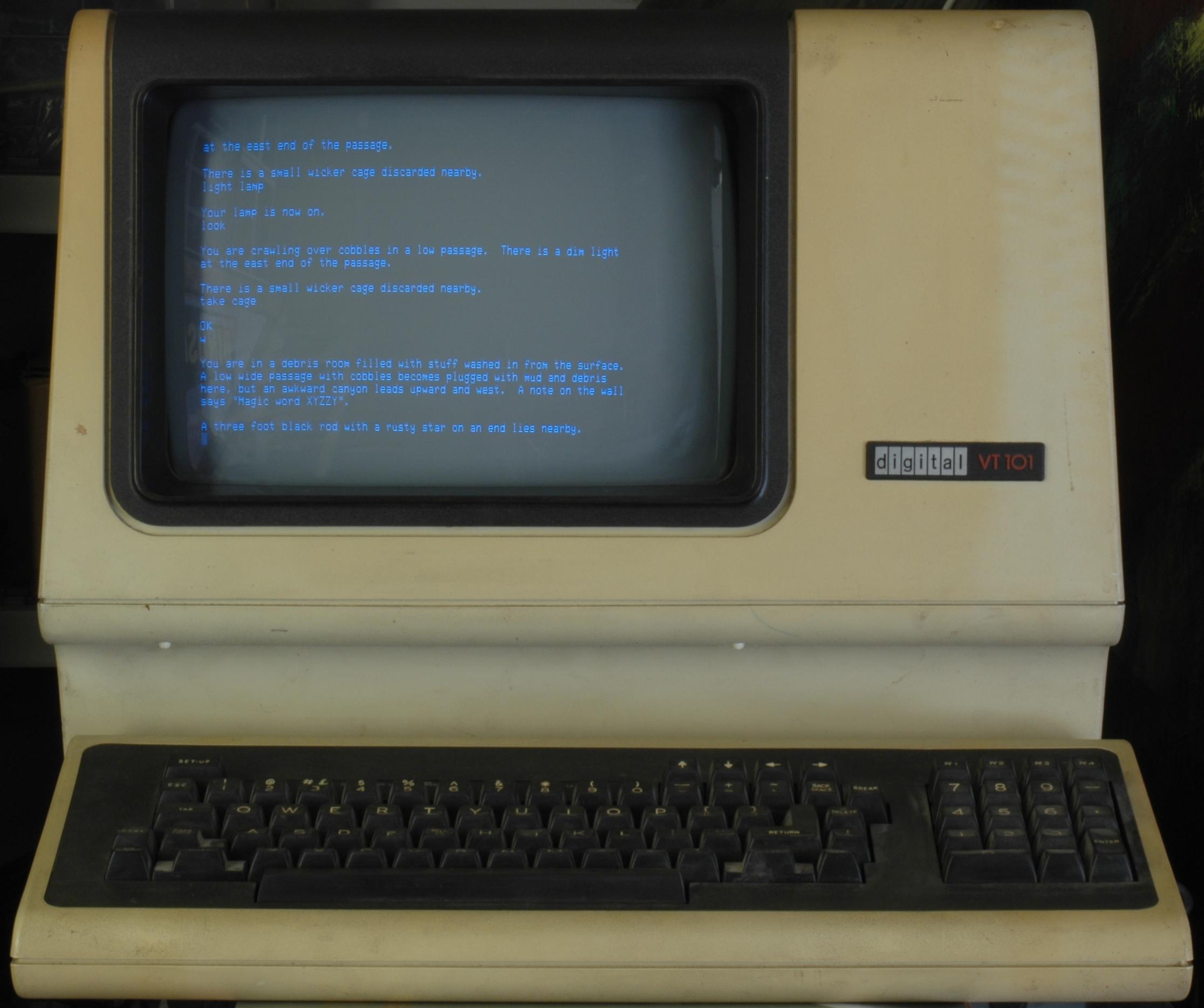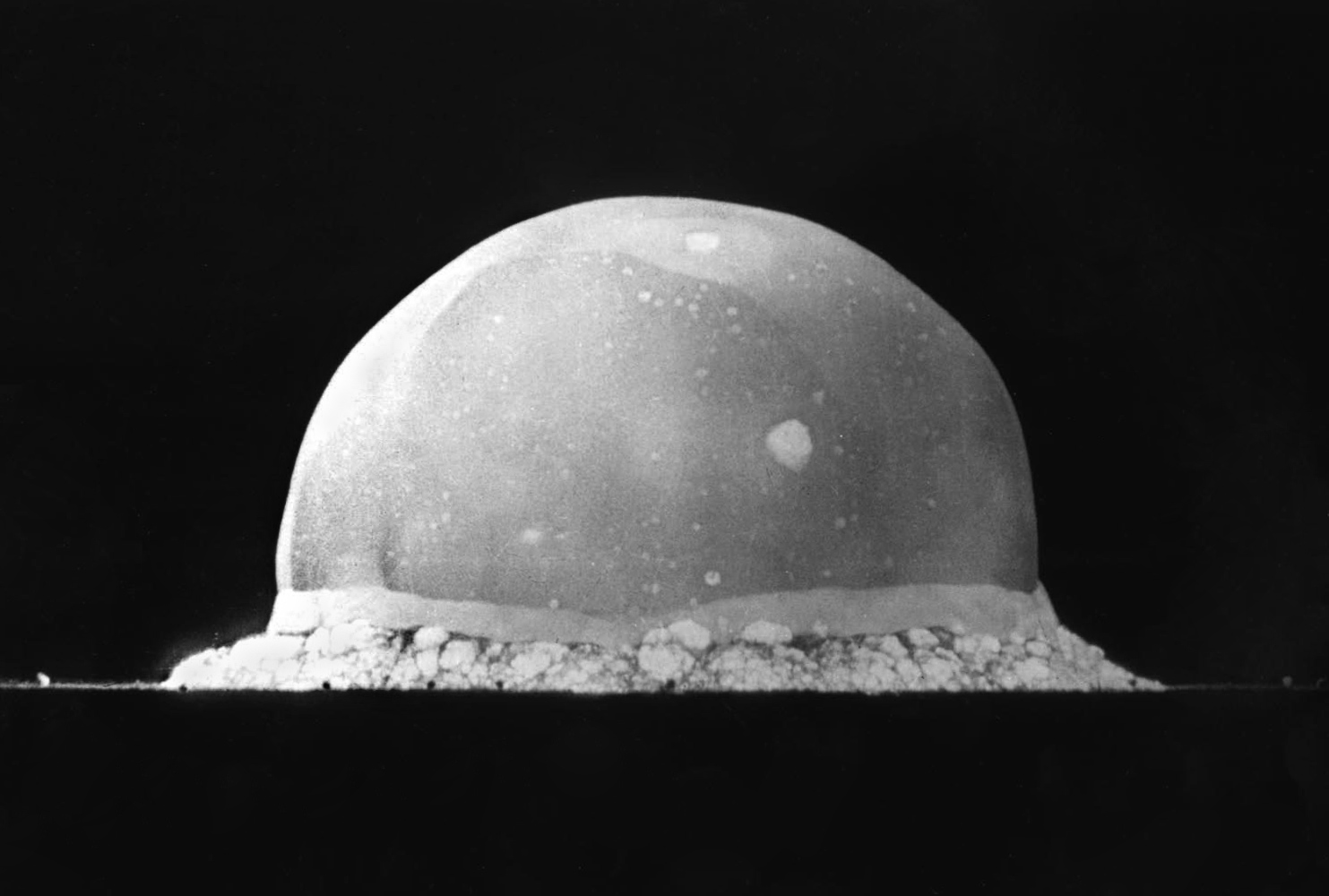|
VT640
The VT640 Retro-Graphics, originally known as the VT100 Retro-Graphics, is an expansion board that was developed by Digital Engineering, Inc., for Digital Equipment Corporation's popular VT100 terminal, allowing it to be used as a graphics terminal capable of a resolution of 640 by 480 pixels. Digital Engineering introduced the VT640 in September 1980 as the second in their line of Retro-Graphics text-to-graphics-terminal conversion boards. Specifications The VT640 board displays graphics at a resolution of 640 by 480 pixels on the VT100's monochrome, green-phosphor CRT. The board boasts full graphical compatibility with the Tektronix 4010 and featured the ability to plot individual points on the screen as well as solid, dotted, and dashed lines based on vector instructions, as well as the ability to selectively erase portions of the screen and change the size of text characters on the fly. The VT640 could work with Tektronix's Plot 10 CAD software and ISSCO's Tellagraf chart-maki ... [...More Info...] [...Related Items...] OR: [Wikipedia] [Google] [Baidu] |
Synclavier II
The Synclavier is an early digital synthesizer, polyphonic digital sampling system, and music workstation manufactured by New England Digital Corporation of Norwich, Vermont. It was produced in various forms from the late 1970s into the early 1990s. Used by many notable musicians, the Synclavier was inducted into the TECnology Hall of Fame, an honor given to "products and innovations that have had an enduring impact on the development of audio technology," in 2004. History The original design and development of the Synclavier prototype occurred at Dartmouth College with the collaboration of Jon Appleton, Professor of Digital Electronics, Sydney A. Alonso, and Cameron Jones, a software programmer and student at Dartmouth's Thayer School of Engineering. Synclavier I First released in 1977–78, Note: This magazine article itself lacks sources, and as a result, lacks verifiability. it proved to be highly influential among both electronic music composers and music producers, ... [...More Info...] [...Related Items...] OR: [Wikipedia] [Google] [Baidu] |
Graphics Terminal
A computer terminal is an electronic or electromechanical hardware device that can be used for entering data into, and transcribing data from, a computer or a computing system. Most early computers only had a front panel to input or display bits and had to be connected to a terminal to print or input text through a keyboard. Teleprinters were used as early-day hard-copy terminals and predated the use of a computer screen by decades. The computer would typically transmit a line of data which would be printed on paper, and accept a line of data from a keyboard over a serial or other interface. Starting in the mid-1970s with microcomputers such as the Sphere 1, Sol-20, and Apple I, display circuitry and keyboards began to be integrated into personal and workstation computer systems, with the computer handling character generation and outputting to a CRT display such as a computer monitor or, sometimes, a consumer TV, but most larger computers continued to require terminals. E ... [...More Info...] [...Related Items...] OR: [Wikipedia] [Google] [Baidu] |
VT100
The VT100 is a video terminal, introduced in August 1978 by Digital Equipment Corporation (DEC). It was one of the first terminals to support ANSI escape codes for cursor control and other tasks, and added a number of extended codes for special features like controlling the status lights on the keyboard. This led to rapid uptake of the ANSI standard, which became the de facto standard for hardware video terminals and later terminal emulators. The VT100 series, especially the VT102, was extremely successful in the market, and made DEC the leading terminal vendor at the time. The VT100 series was replaced by the VT200 series starting in 1983, which proved equally successful. Ultimately, over six million terminals in the VT series were sold, based largely on the success of the VT100. Description DEC's first video terminal was the VT05 (1970), succeeded by the VT50 (1974), and soon upgraded to the VT52 (1975). The VT52 featured a text display with 80 columns and 24 rows, bidire ... [...More Info...] [...Related Items...] OR: [Wikipedia] [Google] [Baidu] |
Light Pen
A light pen is a computer input device in the form of a light-sensitive wand used in conjunction with a computer's cathode-ray tube (CRT) display. It allows the user to point to displayed objects or draw on the screen in a similar way to a touchscreen but with greater positional accuracy. A light pen can work with any CRT-based display, but its ability to be used with LCDs was unclear (though Toshiba and Hitachi displayed a similar idea at the "Display 2006" show in Japan). A light pen detects changes in brightness of nearby screen pixels when scanned by cathode-ray tube electron beam and communicates the timing of this event to the computer. Since a CRT scans the entire screen one pixel at a time, the computer can keep track of the expected time of scanning various locations on screen by the beam and infer the pen's position from the latest time stamps. History The first light pen, at this time still called "light gun", was created around 1951–1955 as part of the Whi ... [...More Info...] [...Related Items...] OR: [Wikipedia] [Google] [Baidu] |
New England Digital
New England Digital Corporation (1976–1993) was founded in Norwich, Vermont, and relocated to White River Junction, Vermont. It was best known for its signature product, the Synclavier Synthesizer System, which evolved into the Synclavier Digital Audio System or "Tapeless Studio." The company sold an FM digital synthesizer/16-bit polyphonic synthesizer and magnetic disk-based non-linear 16-bit digital recording product, referred to as the "Post-Pro." The Synclavier was developed as the "Dartmouth Digital Synthesizer" by Dartmouth College Professors Jon Appleton and Frederick J. Hooven, in association with NED co-founders Sydney A. Alonso and Cameron W. Jones. The Synclavier would become the pioneering prototype hardware and software system for all digital non-linear synthesis, polyphonic sampling, magnetic (hard-disk) recording and sequencing systems technology that is commonplace in all music and sound effects/design today. The instrument's development picked up speed in lat ... [...More Info...] [...Related Items...] OR: [Wikipedia] [Google] [Baidu] |
Skin (aeronautics)
The skin of an aircraft is the outer surface which covers much of its wings and fuselage. The most commonly used materials are aluminum and aluminium alloys with other metals, including zinc, magnesium and copper. See also *Index of aviation articles Aviation is the design, development, production, operation, and use of aircraft, especially heavier-than-air aircraft. Articles related to aviation include: A Aviation accidents and incidents – Above Mean Sea Level (AMSL) – ADF – Acces ... References Aircraft components {{component-aircraft-stub ... [...More Info...] [...Related Items...] OR: [Wikipedia] [Google] [Baidu] |
Interferometry
Interferometry is a technique which uses the ''interference (wave propagation), interference'' of Superposition principle, superimposed waves to extract information. Interferometry typically uses electromagnetic waves and is an important investigative technique in the fields of astronomy, Optical fiber, fiber optics, engineering metrology, optical metrology, oceanography, seismology, spectroscopy (and its applications to chemistry), quantum mechanics, Nuclear physics, nuclear and particle physics, plasma physics, interactome, biomolecular interactions, surface profiling, microfluidics, mechanical stress/strain measurement, velocimetry, optometry, and making holograms. Interferometers are devices that extract information from interference. They are widely used in science and industry for the measurement of microscopic displacements, refractive index changes and surface irregularities. In the case with most interferometers, light from a single source is split into two beams that ... [...More Info...] [...Related Items...] OR: [Wikipedia] [Google] [Baidu] |
Lockheed Missiles And Space Company
Lockheed Missiles and Space Company (LMSC) was a unit of the Lockheed Corporation "Missiles, Space, and Electronics Systems Group." LMSC was started by Willis Hawkins who served as its president. After Lockheed merged with Martin-Marietta the unit became known as "Lockheed Martin The Lockheed Martin Corporation is an American Arms industry, defense and aerospace manufacturer with worldwide interests. It was formed by the merger of Lockheed Corporation with Martin Marietta on March 15, 1995. It is headquartered in North ... Missiles and Space". Located in Sunnyvale, California adjacent to Moffett Field, it operated a major satellite development and manufacturing plant. Headquartered in Bethesda, Maryland, Lockheed Martin is an American global aerospace company that employs more than 110,000 people worldwide. The defense powerhouse focuses on the design, development, and manufacturing of advanced technological systems. Serving the U.S. and International customers, Lockh ... [...More Info...] [...Related Items...] OR: [Wikipedia] [Google] [Baidu] |
Nuclear Reactor
A nuclear reactor is a device used to initiate and control a Nuclear fission, fission nuclear chain reaction. They are used for Nuclear power, commercial electricity, nuclear marine propulsion, marine propulsion, Weapons-grade plutonium, weapons production and Research reactor, research. Fissile material, Fissile nuclei (primarily uranium-235 or plutonium-239) absorb single neutron, neutrons and split, releasing energy and multiple neutrons, which can induce further fission. Reactors stabilize this, regulating Neutron absorber, neutron absorbers and neutron moderator, moderators in the core. Fuel efficiency is exceptionally high; Enriched uranium#Low-enriched uranium (LEU), low-enriched uranium is 120,000 times more energy dense than coal. Heat from nuclear fission is passed to a working fluid Nuclear reactor#By coolant, coolant. In commercial reactors, this drives Turbine, turbines and electrical generator shafts. Some reactors are used for district heating, and isotopes, isoto ... [...More Info...] [...Related Items...] OR: [Wikipedia] [Google] [Baidu] |
Los Alamos National Laboratory
Los Alamos National Laboratory (often shortened as Los Alamos and LANL) is one of the sixteen research and development Laboratory, laboratories of the United States Department of Energy National Laboratories, United States Department of Energy (DOE), located a short distance northwest of Santa Fe, New Mexico, in the Southwestern United States, American southwest. Best known for its central role in helping develop the First Atomic bomb, first atomic bomb, LANL is one of the world's largest and most advanced scientific institutions. Los Alamos was established in 1943 as Project Y, a top-secret site for designing nuclear weapons under the Manhattan Project during World War II.The site was variously called Los Alamos Laboratory and Los Alamos Scientific Laboratory. Chosen for its remote yet relatively accessible location, it served as the main hub for conducting and coordinating nuclear research, bringing together some of the world's most famous scientists, among them numerous Nobel ... [...More Info...] [...Related Items...] OR: [Wikipedia] [Google] [Baidu] |





